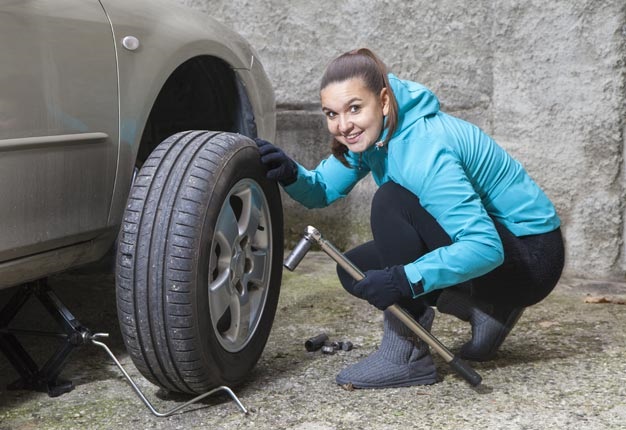
You wouldn’t want to board a cruise ship without a lifeboat – so don’t take your car’s spare tyre for granted. Think of your spare tyre as that essential life-vest on the high seas. Whether you’re heading out on a long journey or just moving around the suburbs on your daily routine, your spare tyre can make all difference in the case of an emergency.
Don’t assume that your spare tyre is in perfect shape, especially if you haven’t taken the time to check it in a while.
Dunlop Zones see many motorists with spare tyres that are flat (which rather defeats the purpose), the incorrect size or suffering damage due to the advanced age of the tyre.
Space Saver Tyres – are not permanent fixtures
With some newer models of cars, the spare tyre is in fact a different size to the rest of the tyres on the vehicle. This is known as a space saver tyre. It is used to save space in the boot and is only meant to travel over a short distance, e.g. to the nearest garage for assistance, in the case of a puncture.
Dunlop warns that these small space saver spare tyres are not designed for traveling at high speeds or over long distances. Motorists should be aware that their space saver tyre does not carry the same speed rating as that of the other tyres fitted to their vehicle. Most space saver tyres have a maximum speed rating of 80km per hour, while a regular passenger vehicle tyres are speed rated up to 170 km per hour. This means that once fitted with a space saver, the vehicle should not be driven at speeds in excess of 80km/h.
Motorists whose cars are fitted with a space saver spare or different size tyres should not use it with the other tyres fitted onto their vehicles indefinitely, as they pose a serious safety risk in the long run and the original size tyre should be replaced ASAP.
Old age tyres
Check the date of manufacture indicated on the sidewall of the tyre. The life-span of any tyre is approximately five years, whether it is driven on or not, so beyond this period the compound deteriorates and the tyre could become unsafe. Natural degradation of the rubber compound of the tyre over several years may cause the tyre to lose its protective capabilities, rendering it unsafe. As a rule, the spare tyre should be replaced as often as the other tyres on the car (every two to three years).
Let’s face it – our spare tyres often get forgotten in the boot for long periods in high temperatures. Dunlop warns that this increases the rate of deterioration of the tyre components and that this deterioration can lead to sudden failure of the tyre when traveling at a high speed.
Damaged spare tyres
Spare tyres should be checked for bulges, lumps and cracks that could indicate tyre deterioration. If you are unsure about the suitability of your spare – pop by a Dunlop Zone for some expert advice. The trained staff will be able to gauge whether your spare has any signs of damage.
Check the tread depth
Check that the remaining tread on your tyres falls safely within the legal requirements. A legal minimum of 1mm in depth across the entire width and circumference is stipulated in South Africa, while Dunlop adheres to as a professional yardstick of 1.66mm.




 Publications
Publications
 Partners
Partners













